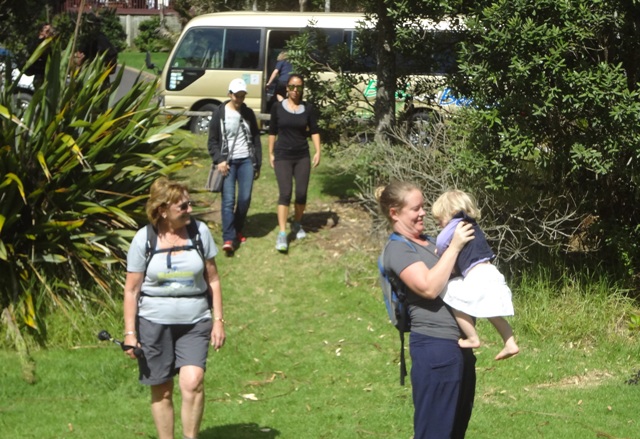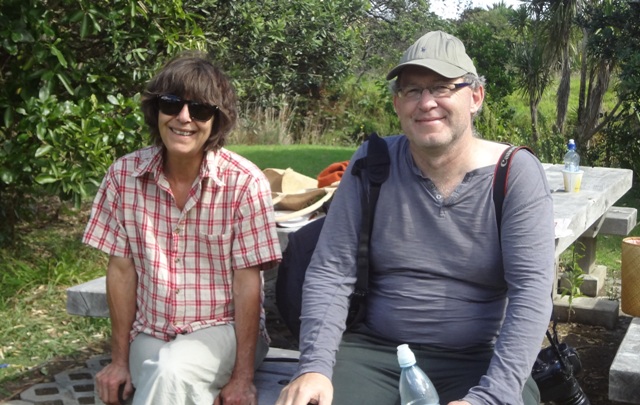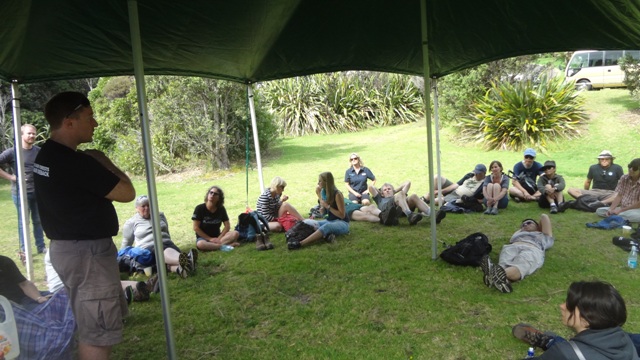Waitakere Ranges Local Board today (5 April 2014) led a successful walk along the Maungaroa Ridge Track, where the first unusual symptoms on kauri trees were seen by a Piha local in 2006.
Starting in Bush and Beach mini-buses at Glen Eden Railway Station, the group went to the Poleline Track off Anawhata Road. Auckland Council scientist Nick Waipara briefed the 30 or so walkers about kauri dieback, now infecting 13% of the kauri areas in the Waitakere Ranges.
Mostly – about 70% of the time – kauri dieback areas are associated with tracks, and as the phytophthora is a water mould, known to spread through movement of water and soil, human shoes are the most likely culprit in the spread.
The walking group sprayed its shoes with disinfection before walking along the tracks on Maungaroa Ridge that lead through the infected area.
Nick and regional park ranger Simon Stoddart were able to show infected trees, some lying on the ground, others leaning, and many still upright showing the distinctive “stags’ horn” crowns stripped of leaves and bark. Some nearby trees look healthy and it is not known whether they are still to manifest disease, or have developed immunity. Auckland University scientist and kauri expert Brice Burns has pegged out areas on the ridge to measure the rate of spread of the infection.
The group descended the steep Maungaroa Lookout Track before lunching at Sir Algernon Thomas Green where Nick answered more questions about the role of feral pigs, how the disease got to NZ – possibly through imported Asia and Pacific kauri species – and where to from here.
The walk was organised by the WRLB’s environment portfolio holder, Saffron Toms, and supported by regional parks who provided a marquee and ranger support.





